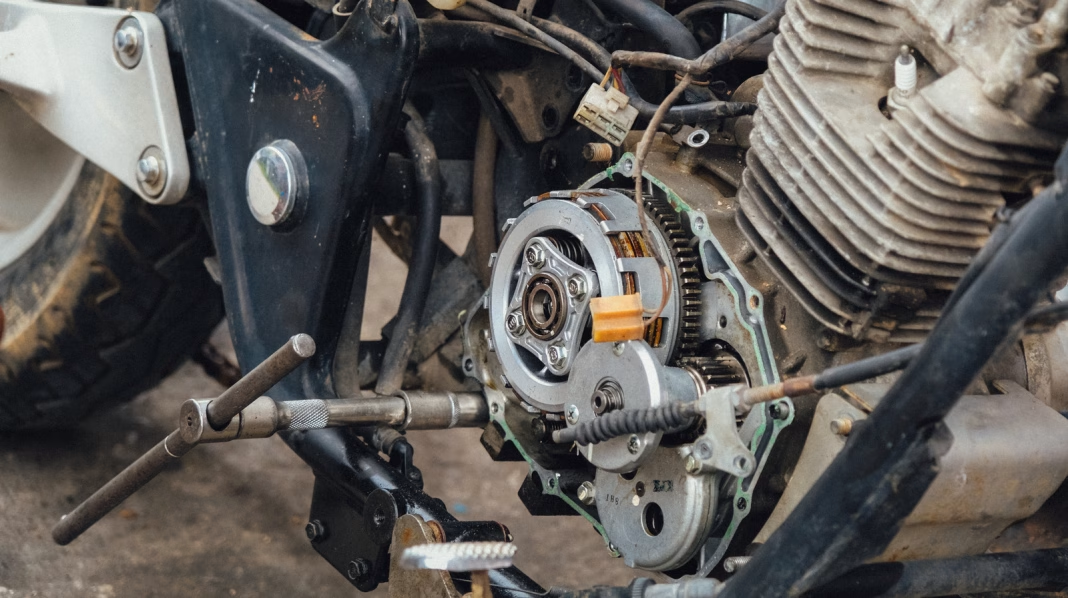Why Do People Think a Slipping Clutch Is Always Bad News?
If you’ve ever heard someone mention a slipping clutch, chances are their tone wasn’t exactly cheerful. That’s because, in the world of motorcycles and cars, a clutch that slips unintentionally usually means trouble. Picture this: you twist the throttle, the engine revs up, but your bike doesn’t surge forward the way it should. Instead, you get a weird disconnect—like the power isn’t making it to the wheels. That’s classic clutch slip, and it often signals worn plates or a mechanical issue that needs attention.
But here’s where things get interesting. Not all clutch “slip” is a problem. In fact, there’s a clever bit of engineering called a slipper clutch that’s designed to slip—on purpose. And it’s a game-changer for anyone who loves spirited riding.
What Exactly Is a Slipper Clutch, and How Is It Different?
Let’s clear up the confusion: a slipper clutch isn’t the same as a worn-out clutch that’s lost its grip. Instead, it’s a specialized mechanism built into many modern sport bikes (and even some high-performance cars) to help manage engine braking and prevent rear wheel hop when you downshift aggressively.
Here’s the gist: when you chop the throttle and bang down a gear, the rear wheel can suddenly be forced to spin slower than the engine wants. That mismatch can lock up the rear tire, causing it to chatter or even slide out. Enter the slipper clutch. It allows the clutch to partially disengage under back-torque, letting the wheel and engine speeds sync up more smoothly. The result? Pure magic. You get safer, more controlled downshifts—especially when riding at the limit.
How Does a Slipper Clutch Actually Work?
Imagine you’re barreling into a corner, brake hard, and click down two gears. With a standard clutch, the sudden jump in engine RPM can overwhelm the rear tire, leading to instability. But a slipper clutch uses ramps or cams inside the clutch hub. When the rear wheel tries to drive the engine faster than it wants to spin, those ramps push the clutch plates apart just enough to let them slip. It’s a controlled, partial disengagement—not a total loss of drive.
This means the rear wheel can keep rolling smoothly, even if your downshift was a bit too ambitious. It’s like having a safety net for your transmission and your tires. And for racers or aggressive street riders, that can make all the difference between a clean corner and a scary slide.
Are Slipper Clutches Only for Racers, or Do Everyday Riders Benefit Too?
While slipper clutches first gained popularity in racing—where every millisecond and ounce of control counts—they’ve trickled down to many street bikes for good reason. Even if you’re not dragging a knee at the track, you’ll notice the difference in tricky situations: wet roads, emergency stops, or just spirited rides through twisty backroads.
A 2023 industry survey found that over 60% of new sport and sport-touring motorcycles now come equipped with slipper clutches as standard. Manufacturers like Honda, Yamaha, and Kawasaki tout the technology as a safety and comfort feature, not just a performance upgrade. Riders report smoother downshifts, less fatigue, and greater confidence—especially when learning to ride or handling unpredictable conditions.
Can a Slipper Clutch Prevent All Rear Wheel Lockup?
Here’s where nuance matters. A slipper clutch is a fantastic tool, but it’s not a magic wand. If you downshift way too early or dump the clutch with reckless abandon, physics can still catch up with you. The system is designed to reduce, not eliminate, the risk of rear wheel hop or lockup. Think of it as a buffer that gives you more margin for error—not a license to ignore good riding technique.
Experts recommend pairing a slipper clutch with smooth throttle and clutch control for best results. In fact, many advanced riding schools teach students to use the slipper clutch as a supplement to, not a replacement for, proper downshifting habits.
What About Maintenance and Longevity—Do Slipper Clutches Wear Out Faster?
You might wonder if all that intentional slipping means more wear and tear. The good news: slipper clutches are engineered for durability. Most use high-quality materials and precise tolerances to handle the extra movement. Regular maintenance—like checking clutch plate thickness and keeping the mechanism clean—will keep things running smoothly for years.
Some riders even report that slipper clutches help extend the life of other drivetrain components by reducing shock loads during aggressive riding. That said, if you’re consistently riding hard or racing, it’s wise to follow your manufacturer’s service intervals and keep an ear out for unusual noises or changes in clutch feel.
Is Upgrading to a Slipper Clutch Worth It for Older Bikes?
If your motorcycle didn’t come with a slipper clutch, aftermarket kits are available for many popular models. Installation can be a bit involved—think several hours and some specialized tools—but the payoff is real. Riders who’ve made the switch often describe it as transformative, especially if they enjoy spirited riding or want extra peace of mind in tricky conditions.
Before you dive in, weigh the cost and complexity against your riding style. For commuters or casual weekend riders, the upgrade might be overkill. But for anyone who loves carving corners or wants a little extra safety net, it’s a worthy investment.
The Big Takeaway? A Slipper Clutch Isn’t About Perfection—It’s About Smarter Adjustments
Here’s the bottom line: a slipping clutch usually spells trouble, but a slipper clutch is all about control and confidence. It’s not about riding perfectly every time—it’s about building in a little forgiveness for those moments when you push the limits. Start with one change this week: pay attention to your downshifts, or try a bike with a slipper clutch if you get the chance. Odds are, you’ll feel the difference by month’s end—and wonder how you ever rode without it.


